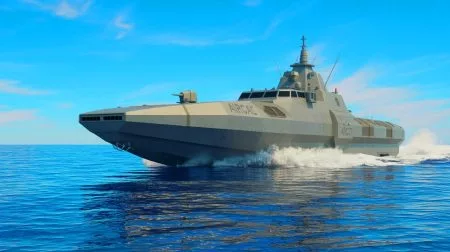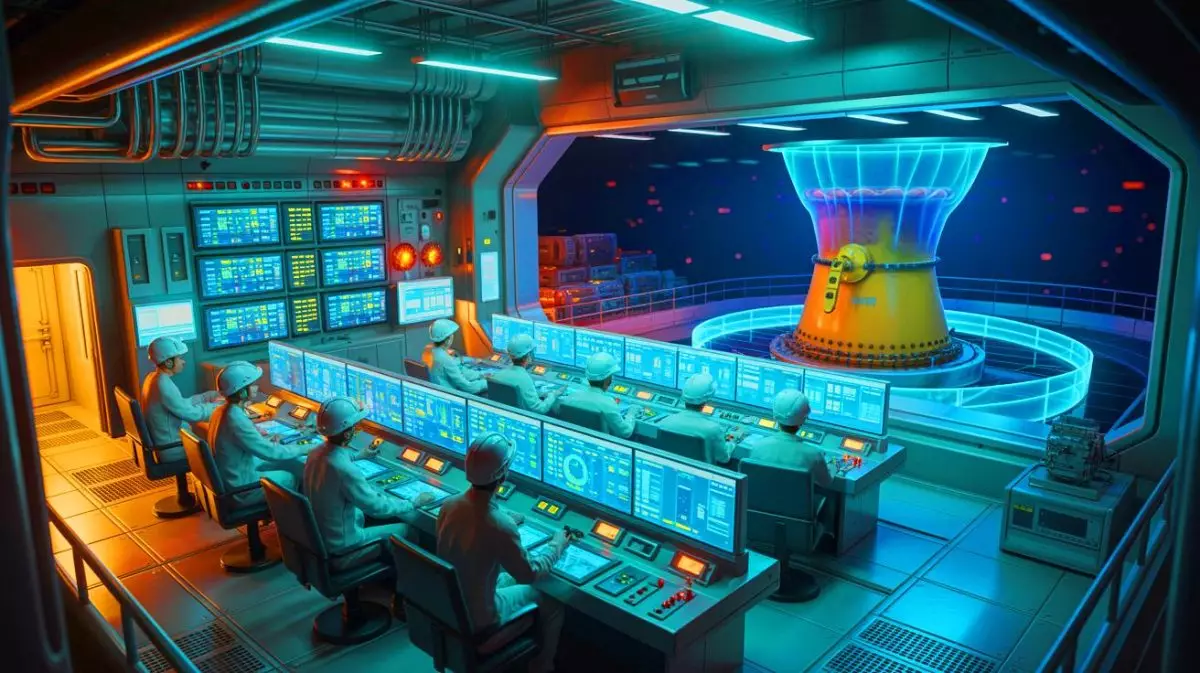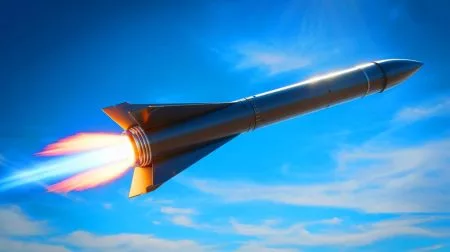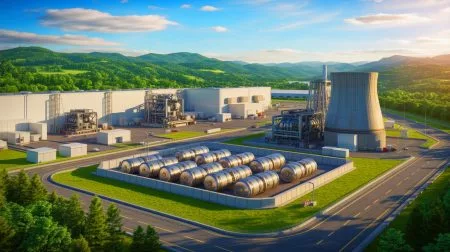| IN A NUTSHELL |
|
As the world seeks sustainable energy solutions, the nuclear power industry remains a pivotal player in meeting global energy demands. While nuclear energy offers immense potential, challenges persist, particularly in fuel efficiency and waste management. Russia’s Rosatom is making strides in addressing these issues with its innovative VVER-S reactor. This development could reshape the nuclear landscape, offering a glimpse into a future where the environmental impact and resource utilization of nuclear power are significantly improved. Let’s delve into the key aspects of this groundbreaking project and its implications for the future of nuclear energy.
The VVER-S: Russia’s Innovative Response to Nuclear Challenges
The VVER-S reactor represents a bold step forward in nuclear technology. Developed by Rosatom, this 600 MW water-moderated and cooled reactor is currently undergoing testing at the A.I. Leypunsky Institute of Physics and Power Engineering in Russia. The reactor’s design integrates the use of MOX (mixed oxide) fuel, which comprises 8.5% plutonium and 91.5% depleted uranium. This innovative approach aims to address the longstanding issues of fuel inefficiency and radioactive waste management.
Unlike traditional pressurized water reactors that rely on boric acid to absorb excess neutrons, the VVER-S employs a unique spectral control method. This method adjusts the ratio between water and uranium, allowing Uranium-238 to capture surplus neutrons and generate plutonium, which can be used as fuel. This self-sustaining process reduces the need for fresh fuel and maximizes the use of each gram of fissile material. The VVER-S is a testament to Russia’s commitment to advancing nuclear technology and minimizing environmental impact.
The MOX Fuel: A Solution to Nuclear Waste
MOX fuel is a cornerstone of the VVER-S reactor’s design, offering a path towards more sustainable nuclear energy. Composed of plutonium dioxide and depleted uranium dioxide, MOX fuel leverages existing nuclear waste to generate energy. By utilizing waste that would otherwise require long-term storage, it addresses a critical environmental concern associated with nuclear power.
Rosatom’s projections indicate that operating the VVER-S with a full MOX fuel load could cut the consumption of natural uranium in half over the reactor’s lifetime. This reduction not only represents a financial saving equivalent to the reactor’s initial cost but also underscores a commitment to sustainable energy practices. By integrating MOX fuel, the VVER-S sets a precedent for future nuclear reactors aiming to balance energy production with environmental stewardship.
Global Nuclear Fuel Market: A $10 Billion Industry
The global nuclear fuel market, valued at approximately $10 billion annually, is a critical component of the energy sector. This market supports the operation of over 410 nuclear reactors worldwide, which contribute nearly 2,900 TWh of electricity annually. Key players such as Framatome, Westinghouse, TVEL, and Orano are at the forefront of developing advanced fuels like Accident Tolerant Fuels (ATF), which enhance reactor safety and efficiency.
Asia, particularly China, is experiencing significant growth in nuclear capacity, driving demand for nuclear fuel. The development of small modular reactors (SMR) further fuels this market expansion. As countries invest in nuclear energy to meet ambitious climate goals, the nuclear fuel industry is poised for continued growth. The innovative approaches of companies like Rosatom and Framatome reflect a broader trend towards enhancing nuclear fuel technology to meet future energy needs.
The Future of Nuclear Energy: Generation IV and Beyond
The VVER-S, while a remarkable advancement, is a Generation III+ reactor. In contrast, Generation IV reactors promise even greater improvements in safety, efficiency, and resource utilization. These advanced systems include various designs such as the Very High Temperature Reactor (VHTR), SuperCritical Water Reactor (SCWR), and Molten Salt Reactor (MSR), among others.
Countries like China and Russia are actively pursuing these technologies, with prototypes like the BN-800 already in operation. The potential deployment of Generation IV reactors between 2030 and 2050 could revolutionize the nuclear industry, offering enhanced sustainability and reduced environmental impact. As the world transitions to cleaner energy sources, the role of nuclear power in achieving these goals remains a topic of significant interest and investment.
In an era where energy demands are rapidly increasing, the innovations in nuclear technology provide a promising path forward. The VVER-S reactor, with its advanced fuel utilization and waste reduction capabilities, exemplifies the potential for nuclear energy to play a pivotal role in a sustainable future. As nations continue to invest in nuclear advancements, how will these technologies shape the global energy landscape and address the pressing challenges of climate change and energy security?
Did you like it? 4.6/5 (25)








Wow, this sounds like a game-changer for the nuclear industry! 😊
How long before we see these new reactors in operation globally?
Seems like a lot of hype. Let’s see if it delivers.
Great article! Thanks for the insights. 😊
Isn’t there a risk of proliferation with increased use of MOX fuel?
How does this impact the renewable energy sector? 🤔
Russia seems to be ahead in the nuclear game. What happened, U.S.?
I’m all for reducing waste, but at what cost?
Can someone explain the “spectral control method” in layman’s terms?
Will this lead to more nuclear power plants being built?
I’m curious about the cost implications for developing countries.
Fantastic development in nuclear tech. Kudos to the scientists! 😊
Are we sure this is the best direction with so many renewables available?
These advancements are crucial for energy security. 👍
What’s the timeline for the U.S. to catch up with Russia?
Can’t wait to see how this affects global energy policies.
This article makes me optimistic about the future of energy. 😊
How does this affect the job market in the nuclear sector?
Why is the U.S. always in a “face-off” with Russia? Can’t we all just get along?
Could this technology be used in space exploration? 🚀
The $10 billion market sounds impressive, but is it sustainable?
What measures are in place to ensure the safety of these new reactors?
I’m not convinced. Nuclear disasters are still fresh in our minds. 😟
Great to see innovation, but let’s not forget about the risks involved.
Is MOX fuel economically viable compared to traditional fuels?
The U.S. needs to step up its game if it wants to compete globally.
Interesting read, but I’m skeptical about the environmental claims. 🤔
MOX fuel sounds promising, but what about the safety concerns?
I’m excited to see how this competition will drive innovation. 🚀
Does this mean cheaper energy bills for consumers in the future?